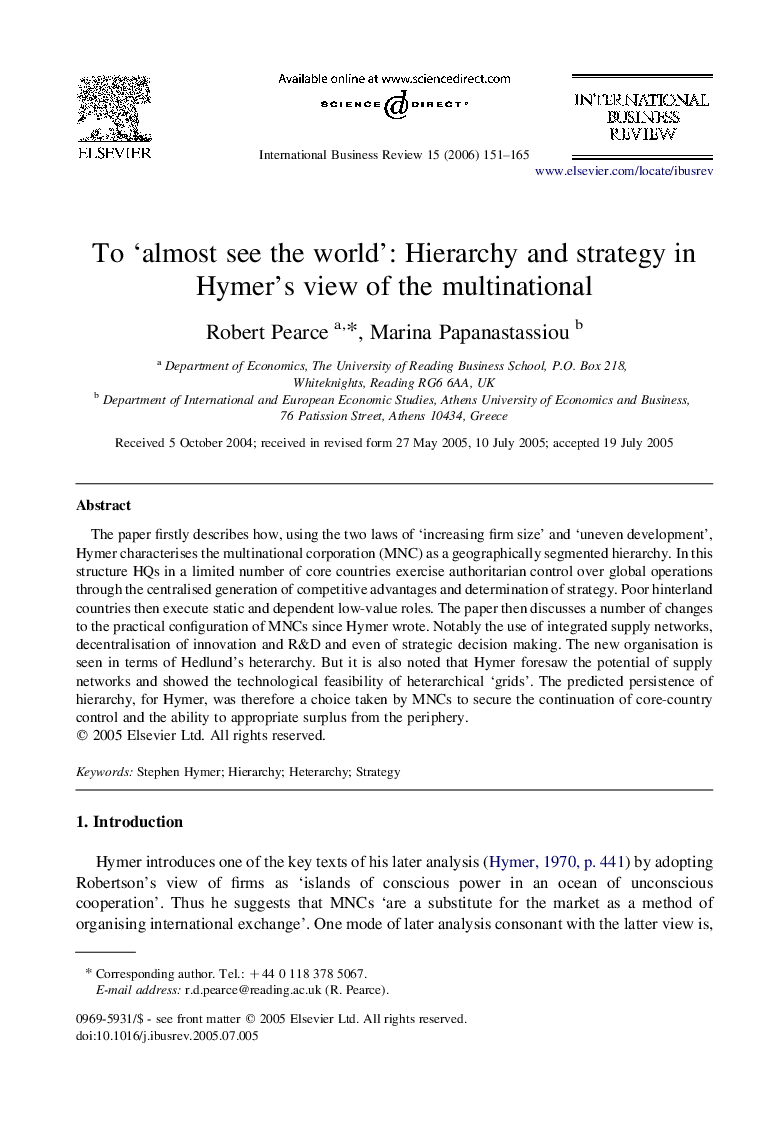| Article ID | Journal | Published Year | Pages | File Type |
|---|---|---|---|---|
| 1000757 | International Business Review | 2006 | 15 Pages |
The paper firstly describes how, using the two laws of ‘increasing firm size’ and ‘uneven development’, Hymer characterises the multinational corporation (MNC) as a geographically segmented hierarchy. In this structure HQs in a limited number of core countries exercise authoritarian control over global operations through the centralised generation of competitive advantages and determination of strategy. Poor hinterland countries then execute static and dependent low-value roles. The paper then discusses a number of changes to the practical configuration of MNCs since Hymer wrote. Notably the use of integrated supply networks, decentralisation of innovation and R&D and even of strategic decision making. The new organisation is seen in terms of Hedlund's heterarchy. But it is also noted that Hymer foresaw the potential of supply networks and showed the technological feasibility of heterarchical ‘grids’. The predicted persistence of hierarchy, for Hymer, was therefore a choice taken by MNCs to secure the continuation of core-country control and the ability to appropriate surplus from the periphery.
